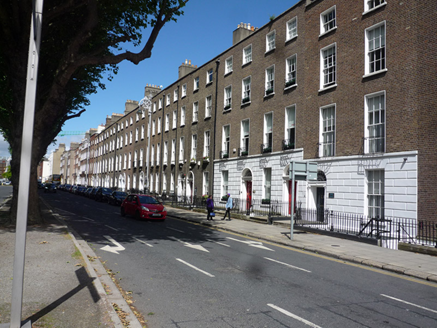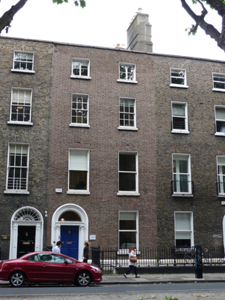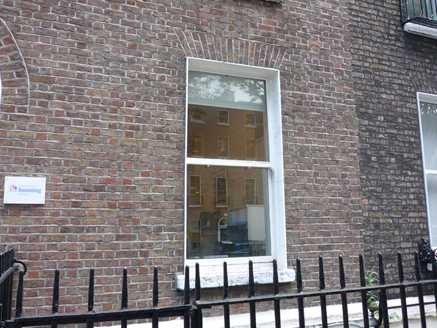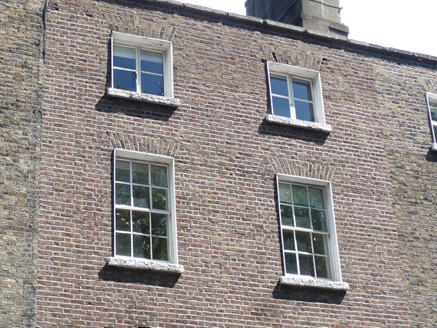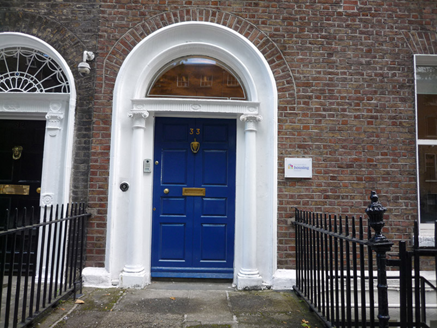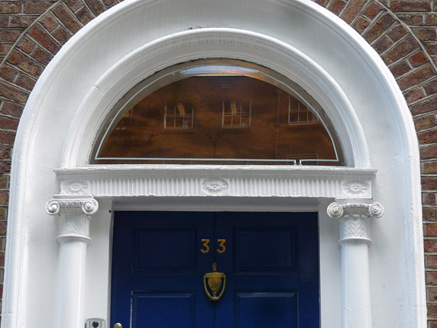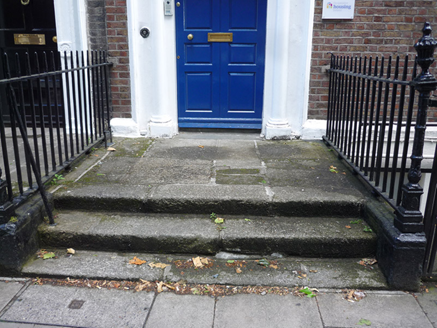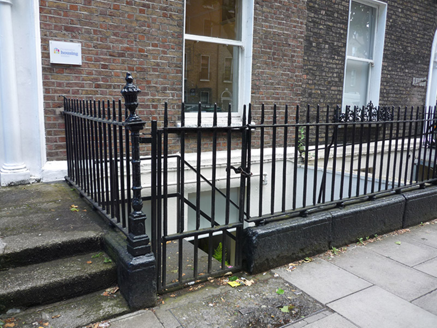Survey Data
Reg No
50100481
Rating
Regional
Categories of Special Interest
Architectural, Artistic
Original Use
House
In Use As
Office
Date
1800 - 1820
Coordinates
316617, 233302
Date Recorded
01/07/2016
Date Updated
--/--/--
Description
Attached two-bay four-storey former house over basement, built c. 1810 as one of pair with No. 34. Now in office use. M-profile pitched slate roof, behind rebuilt brick parapet with concrete coping, rear pitch having dormer window to front slope; shouldered rendered chimneystack shared to east with terracotta pots; and concealed rainwater goods. Flemish bond brown brick walling over painted rendered basement walls; rendered to rear. Square-headed window openings, diminishing in height to upper floors, having plain rendered reveals and painted granite sills. Timber sliding sash windows, one-over-one pane with simple horns to ground and first floors, six-over-six pane to second floor without horns and having some historic glass, and bipartite replacement timber casements to top floor; rear has timber sash windows, tripartite to ground and first floors of east bay, and round-headed stairs window to west bay with abutment. Round-headed doorcase having cavetto-moulded architrave, Adamesque Ionic columns, fluted frieze with rosettes and cornice, plain fanlight in moulded architrave, and eight-panel timber door with beaded muntin and brass furniture. Granite flagged platform bridging basement, with three granite steps to street level. Basement enclosed by wrought-iron railings and gate, with decorative cast-iron posts, on painted moulded granite plinth, with recent steel steps to basement. Modernized two-storey mews building to rear, fronting Little Fitzwilliam Place.
Appraisal
An early nineteenth-century Georgian house that was likely built as a pair with No. 34 and has been converted for use as offices. The building retains the well-balanced proportions and graded fenestration pattern typical of the period and is enriched with a decorative doorcase. The intact setting details and retention of timber sash windows makes this building a significant contributor to the intact appearance of this principal Georgian streetscape, fairly well retained along this northeast stretch. Development of Baggot Street began at the west end in the late eighteenth century, but was slow due to recession at that time. There are many signs of speculative building, including variation in levels, materials and detailing. However, by the mid-nineteenth century, Baggot Street had developed into a thriving residential thoroughfare.
